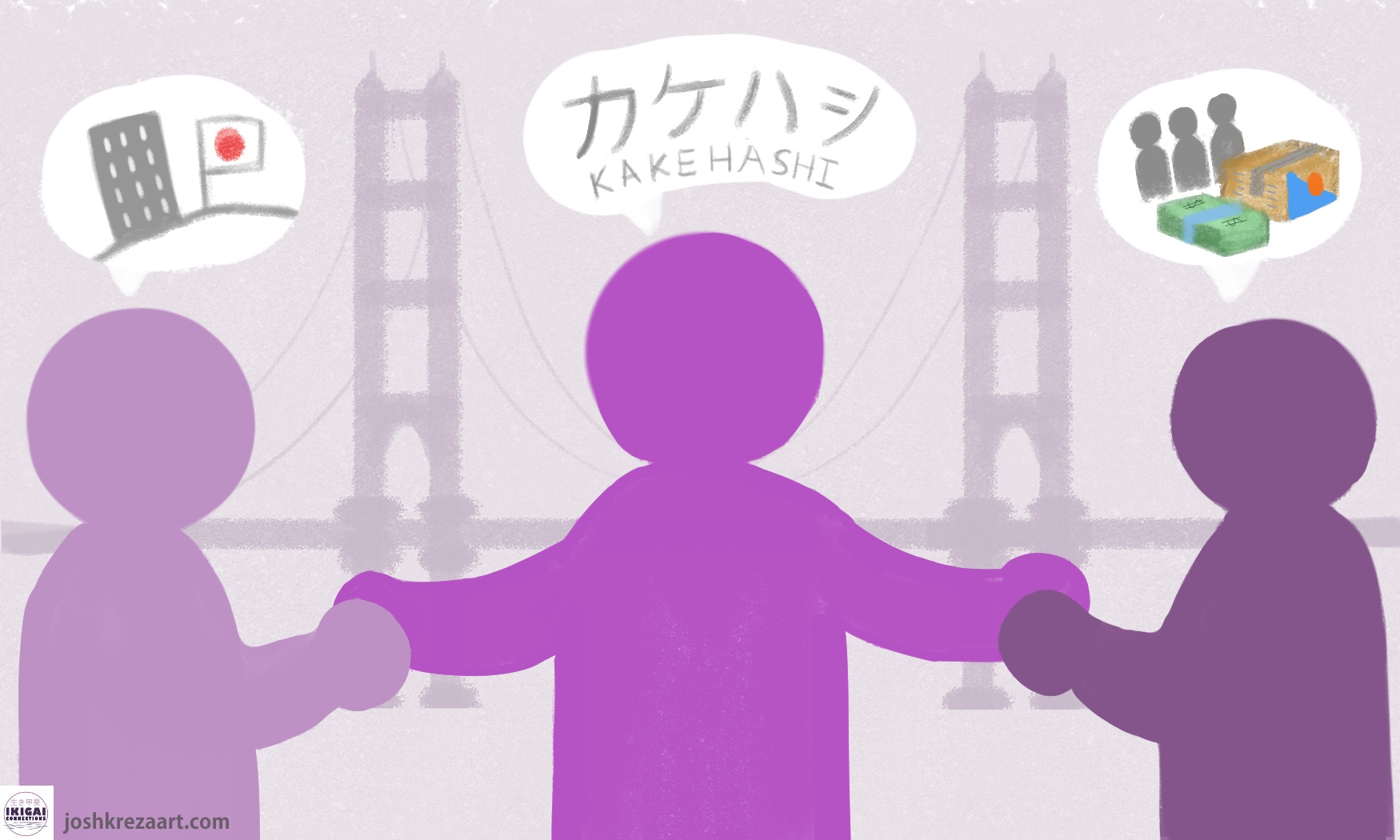Are you offering employment opportunities in the USA that require Japanese/English language/cultural skills?
Let’s connect you with an untapped resource:
local students, graduates, JET returnees, and mid-career professionals.
Introducing: Kakehashi Employees
Kakehashi (“bridge” in Japanese) are local candidates who:
✔️ understand the Japanese language and business culture
✔️ have additional expertise (i.e. engineering, humanities, IT, finance, administration)
✔️ are entry-level (interns/students/graduates), JET returnees, and mid-career employees who want to utilize their Japanese skills

IMAGINE that your locally-hired, Japanese-speaking employee:
… becomes a bridge between cultures to facilitate communication and internal/external relationships.
… understands Japanese direction and can phrase the message succinctly in English via email, telephone, or conversation.
… is trained in your company’s ways and philosophies.
… understands key concepts like kaizen, nemawashi, and hourensou.
… supports other departments because of their additional expertise and assists with localization of key roles.
… loves Japan and is happy to utilize their language/cultural skills in a career.
… improves communication, even if they’re not perfectly “fluent” in Japanese (i.e. Japan travel support, helping expats get accommodated to local life, introducing local employees to Japan).
… thinks outside the box and gives your company fresh ideas.
These are great candidates to support you – they just need an OPPORTUNITY and some TRAINING!
Services
I am not a recruiter – I am a digital bridge between job seekers and companies for Japanese jobs.
The opportunity. I provide a service where employers upload a job ad for a low, one-time fee, and I promote it to my passionate group of followers via my niche job board, Nihongo Jobs. If no one speaks Japanese at your company, I also offer Bilingual Interviews.
The training. Are you willing to invest some time into training your new kakehashi? Take a look at the Japanese Jobs 200 online training program.
Learn More
I dug deep into what Kakehashi can do for global companies in this webinar (conducted in Japanese).
Watch the YouTube replay. Get your List of What Kakehashi Can Do. View Bilingual Slides.![]()
FAQ
“How many people study Japanese?”
- Globally, people want to be certified in Japanese: Nearly 1.4 million people took the Japanese Language Proficiency Test from 87 countries, and 73,500+ passed the JLPT N1 (highest level) in 2019 alone. (Source) Note: the 2020 JLPT was cancelled due to the pandemic and it is held 1x/year in December outside of Japan.
- They want to work in Japan: 5,761 people from 57 countries participated in the JET Program in 2019, and they will seek employment when the program ends in Japan or their home country. (Source) Note: the 2020 JET Program was suspended for the majority of candidates due to the pandemic.
- College-Level Japanese: In the USA alone, 65,000 – 72,000 students learn Japanese at the college/university level. (Source 2006-2016)
- Get local data from your nearest Japanese consulate. In Michigan, there are 17 universities, 1,733 college/university students, and 3,099 K-12 students studying Japanese. (Source 2020)
“Where do I find these ‘Kakehashi Employees’?”
- By posting your job ad on the job board, NihongoJobs.com, which caters to this niche market. Learn more about job ads here.
- Read my LinkedIn article about job fairs and other sources: https://www.linkedin.com/pulse/dear-global-employers-do-you-know-untapped-resource-kasia-カーシャ/
“If I hire a local employee that knows Japanese, what can I do with them?”
- At a minimum, employers can offer any entry-level position like administrative assistant, and then allow them to grow within the company. For highly skilled candidates, such as engineering or accounting majors, employers can place them in the appropriate department.
- Read this list of examples to see how it can apply to your organization.
- Contact Kasia to discuss your options.
“What can I do with an intern?”
- Offering internships for high school and college students has benefits for both sides:
- Employers get to grab excellent candidates while they’re still in school.
- Interns love Japan and will learn the language quicker on the job than in school.
- Advice: Don’t let them sit with nothing to do. If you assign a mentor to listen to their ideas, give them a project, and let them join meetings, the results may surprise you!
“What if I don’t know the Japanese language to check their level?”
- You may request a bilingual interview; please send a message inquiring about this service.
“I don’t have time to train them.” and “I don’t know what they need to be trained on.”
- Contact Kasia for in-person training.
- The Japanese Jobs 200 level course addresses the basics that all new hires need so you can rest easy knowing they will come prepared: meeting seating arrangements, answering the phone, business Japanese usage and honorifics, “unofficial” interpreting/translating, working with Japanese employees, and more.
“What is JET?”
- The Japan Exchange and Teaching Program sends speakers of English to Japan for teaching and other employment opportunities. Many choose this program after graduating from college, and they seek employment in Japan or their home country when it ends. Learn more on the JET website.
